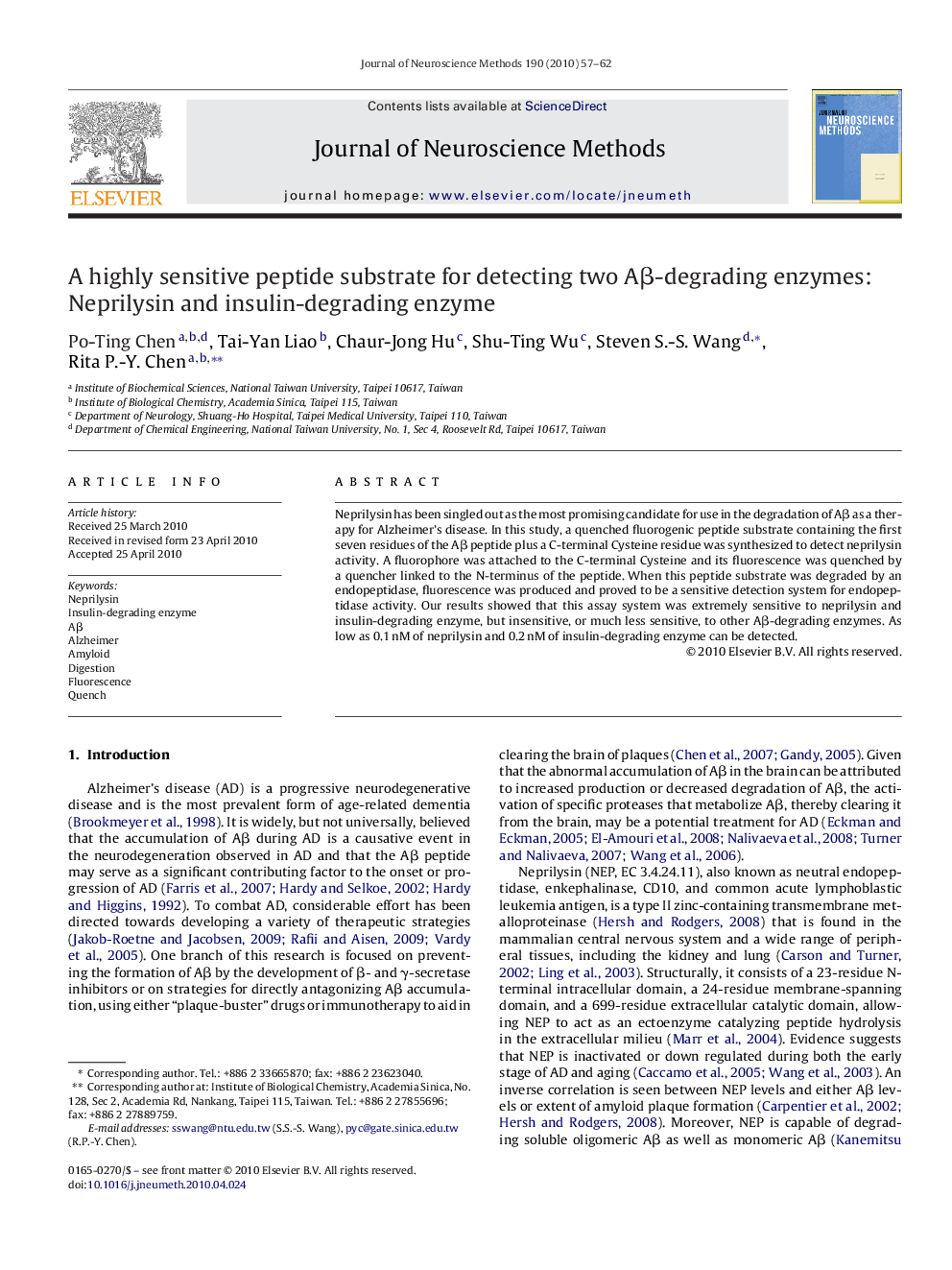| Article ID | Journal | Published Year | Pages | File Type |
|---|---|---|---|---|
| 6269974 | Journal of Neuroscience Methods | 2010 | 6 Pages |
Abstract
Neprilysin has been singled out as the most promising candidate for use in the degradation of Aβ as a therapy for Alzheimer's disease. In this study, a quenched fluorogenic peptide substrate containing the first seven residues of the Aβ peptide plus a C-terminal Cysteine residue was synthesized to detect neprilysin activity. A fluorophore was attached to the C-terminal Cysteine and its fluorescence was quenched by a quencher linked to the N-terminus of the peptide. When this peptide substrate was degraded by an endopeptidase, fluorescence was produced and proved to be a sensitive detection system for endopeptidase activity. Our results showed that this assay system was extremely sensitive to neprilysin and insulin-degrading enzyme, but insensitive, or much less sensitive, to other Aβ-degrading enzymes. As low as 0.1 nM of neprilysin and 0.2 nM of insulin-degrading enzyme can be detected.
Related Topics
Life Sciences
Neuroscience
Neuroscience (General)
Authors
Po-Ting Chen, Tai-Yan Liao, Chaur-Jong Hu, Shu-Ting Wu, Steven S.-S. Wang, Rita P.-Y. Chen,
